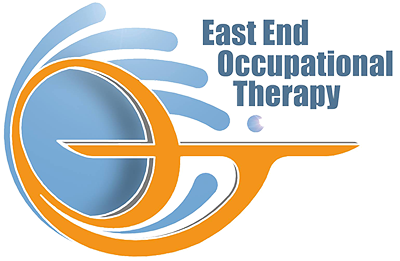Occupational Therapy Near Islip
Occupational Therapy Near Islip NY
In today’s digital age, many of us spend long hours at our desks, typing away on computers. This sedentary lifestyle, combined with repetitive hand movements, often leads to hand and wrist injuries. At East End Occupational Therapy, we specialize in helping individuals prevent and manage these injuries through ergonomic solutions. If you’re searching for occupational therapy near Islip, we can help you create a more ergonomic workspace to keep your hands and wrists healthy. Visit our website to schedule an appointment!

Ergonomics 101: Preventing Hand and Wrist Injuries at Work
Understanding Ergonomics
Ergonomics is the science of designing a workspace that fits the user’s needs, reducing strain and enhancing comfort. By making simple adjustments to your workstation, you can significantly reduce the risk of developing hand and wrist injuries.
Common Hand and Wrist Injuries
Some common hand and wrist injuries associated with poor ergonomics include:
- Carpal Tunnel Syndrome: Caused by pressure on the median nerve in the wrist, leading to pain, numbness, and tingling.
- Tendonitis: Inflammation of the tendons due to repetitive motions.
- Repetitive Strain Injuries (RSIs): Resulting from overuse and strain, leading to chronic pain and discomfort.
Ergonomic Tips for a Healthier Workspace
Here are some practical ergonomic tips to prevent hand and wrist injuries at work:
1. Keyboard and Mouse Positioning
- Keep Your Wrists Neutral: Your wrists should not be bent upwards or downwards while typing. Keep them in a neutral position.
- Mouse Placement: Position your mouse close to your keyboard to avoid overreaching. Use a mouse pad with wrist support if needed.
2. Desk and Chair Setup
- Adjust Your Chair Height: Your feet should be flat on the floor, and your knees should be at a 90-degree angle.
- Desk Height: Ensure your desk is at a height where your forearms are parallel to the floor while typing.
3. Take Frequent Breaks
- Follow the 20-20-20 Rule: Every 20 minutes, take a 20-second break to look at something 20 feet away to reduce eye strain and give your hands a rest.
- Stretching Exercises: Perform simple stretching exercises for your hands and wrists throughout the day.
4. Use Ergonomic Equipment
- Ergonomic Keyboards and Mice: These are designed to minimize strain and support natural hand positions.
- Wrist Supports: Use wrist supports to maintain a neutral wrist position.

How Occupational Therapy Can Help
If you’re already experiencing hand and wrist pain, occupational therapy near Islip can provide targeted interventions to alleviate symptoms and prevent further injury. At East End Occupational Therapy, we offer personalized assessments and treatments, including:
- Ergonomic Evaluations: Assessing your workspace and recommending adjustments to improve ergonomics.
- Strengthening Exercises: Customized exercises to strengthen hand and wrist muscles.
- Pain Management: Techniques to manage and reduce pain.
East End Occupational Therapy
Preventing hand and wrist injuries through proper ergonomics is essential for maintaining productivity and overall well-being. Implementing the tips outlined above can make a significant difference in your comfort and health. If you need expert guidance and treatment, East End Occupational Therapy offers comprehensive occupational therapy near Islip to help you achieve a pain-free work experience. Our team is eager to help Long Island residents get the physical therapy they need. Contact us today to schedule an appointment with our occupational therapist and take the first step towards a healthier, more ergonomic workspace.
Hand Therapy for Musicians: Physical Therapy Long Island
Musicians often dedicate countless hours to perfecting their craft, which can, unfortunately, lead to overuse injuries in the hands and wrists. At East End Occupational Therapy, we understand the unique challenges musicians face and offer specialized treatments to help them recover and prevent future injuries. Our hand therapist in Suffolk County is ready to enhance your fine motor skills with developmental techniques. If you’re looking for occupational therapy near Islip, our experienced therapists are here to help you get back to making beautiful music.
Understanding Overuse Injuries in Musicians
Overuse injuries occur when repetitive motions and prolonged practice sessions strain the muscles, tendons, and nerves in the hands and wrists. Common injuries among musicians include:
- Tendonitis: Inflammation of tendons due to repetitive strain.
- Carpal Tunnel Syndrome: Compression of the median nerve in the wrist, causing pain, numbness, and tingling.
- De Quervain’s Tenosynovitis: Inflammation of the tendons on the thumb side of the wrist.
Symptoms to Watch For
Musicians should be aware of the following symptoms that could indicate an overuse injury:
- Pain or aching in the hands and wrists
- Numbness or tingling sensations
- Weakness or difficulty gripping
- Swelling or inflammation

Preventing Overuse Injuries
Preventing overuse injuries is crucial for musicians who want to maintain their performance levels. Here are some strategies to keep your hands and wrists healthy:
1. Warm-Up Exercises
- Stretching: Perform gentle stretches for your hands and wrists before playing.
- Finger Warm-Ups: Practice finger exercises to increase blood flow and flexibility.
2. Proper Technique
- Posture: Ensure you maintain proper posture while playing to reduce strain on your hands and wrists.
- Instrument Positioning: Adjust the position of your instrument to avoid awkward hand positions.
3. Regular Breaks
- Rest Intervals: Take regular breaks during practice sessions to give your hands time to recover.
- Stretching Breaks: Incorporate short stretching breaks to relieve tension in the hands and wrists.
4. Strengthening Exercises
- Hand and Wrist Strengthening: Perform exercises to strengthen the muscles supporting your hands and wrists.
- Finger Dexterity Exercises: Enhance finger dexterity and coordination with targeted exercises.
How Occupational Therapy Can Help
If you’re experiencing pain or discomfort, seeking occupational therapy near Islip can provide significant relief. At East End Occupational Therapy, we offer specialized hand therapy for musicians, including:
- Personalized Assessments: Evaluating your specific needs and developing a customized treatment plan.
- Manual Therapy: Techniques to relieve pain and improve mobility in the hands and wrists.
- Ergonomic Advice: Guidance on proper technique and instrument positioning to prevent further injury.
- Strengthening and Flexibility Programs: Tailored exercises to build strength and enhance flexibility.
Success Stories
Many musicians have benefited from our hand therapy services, experiencing reduced pain and improved performance. Here are a few examples:
- A pianist who regained full range of motion and returned to performing after suffering from tendonitis.
- A guitarist who overcame carpal tunnel syndrome and enhanced his playing technique through ergonomic adjustments.
Occupational Therapy near Islip
As a musician, taking care of your hands and wrists is essential to maintaining your passion and performance. By implementing preventative measures and seeking professional help when needed, you can continue to enjoy making music without the pain of overuse injuries. If you’re in need of expert care, East End Occupational Therapy offers comprehensive occupational therapy near Islip tailored to the unique needs of musicians. Contact us today to schedule an appointment and take the first step towards a pain-free musical journey.




